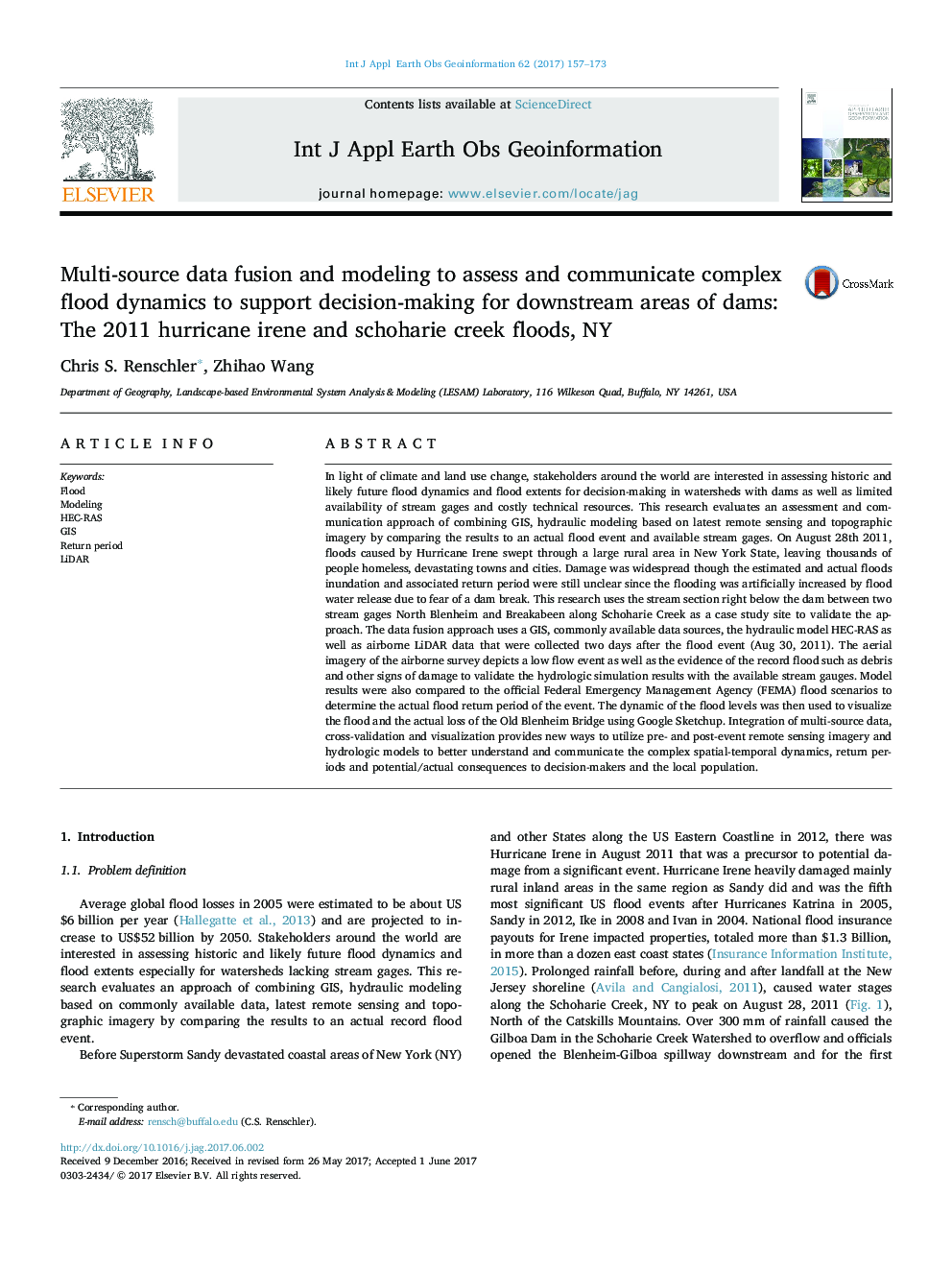| کد مقاله | کد نشریه | سال انتشار | مقاله انگلیسی | نسخه تمام متن |
|---|---|---|---|---|
| 5755536 | 1621795 | 2017 | 17 صفحه PDF | دانلود رایگان |
عنوان انگلیسی مقاله ISI
Multi-source data fusion and modeling to assess and communicate complex flood dynamics to support decision-making for downstream areas of dams: The 2011 hurricane irene and schoharie creek floods, NY
دانلود مقاله + سفارش ترجمه
دانلود مقاله ISI انگلیسی
رایگان برای ایرانیان
کلمات کلیدی
موضوعات مرتبط
مهندسی و علوم پایه
علوم زمین و سیارات
کامپیوتر در علوم زمین
پیش نمایش صفحه اول مقاله

چکیده انگلیسی
In light of climate and land use change, stakeholders around the world are interested in assessing historic and likely future flood dynamics and flood extents for decision-making in watersheds with dams as well as limited availability of stream gages and costly technical resources. This research evaluates an assessment and communication approach of combining GIS, hydraulic modeling based on latest remote sensing and topographic imagery by comparing the results to an actual flood event and available stream gages. On August 28th 2011, floods caused by Hurricane Irene swept through a large rural area in New York State, leaving thousands of people homeless, devastating towns and cities. Damage was widespread though the estimated and actual floods inundation and associated return period were still unclear since the flooding was artificially increased by flood water release due to fear of a dam break. This research uses the stream section right below the dam between two stream gages North Blenheim and Breakabeen along Schoharie Creek as a case study site to validate the approach. The data fusion approach uses a GIS, commonly available data sources, the hydraulic model HEC-RAS as well as airborne LiDAR data that were collected two days after the flood event (Aug 30, 2011). The aerial imagery of the airborne survey depicts a low flow event as well as the evidence of the record flood such as debris and other signs of damage to validate the hydrologic simulation results with the available stream gauges. Model results were also compared to the official Federal Emergency Management Agency (FEMA) flood scenarios to determine the actual flood return period of the event. The dynamic of the flood levels was then used to visualize the flood and the actual loss of the Old Blenheim Bridge using Google Sketchup. Integration of multi-source data, cross-validation and visualization provides new ways to utilize pre- and post-event remote sensing imagery and hydrologic models to better understand and communicate the complex spatial-temporal dynamics, return periods and potential/actual consequences to decision-makers and the local population.
ناشر
Database: Elsevier - ScienceDirect (ساینس دایرکت)
Journal: International Journal of Applied Earth Observation and Geoinformation - Volume 62, October 2017, Pages 157-173
Journal: International Journal of Applied Earth Observation and Geoinformation - Volume 62, October 2017, Pages 157-173
نویسندگان
Chris S. Renschler, Zhihao Wang,